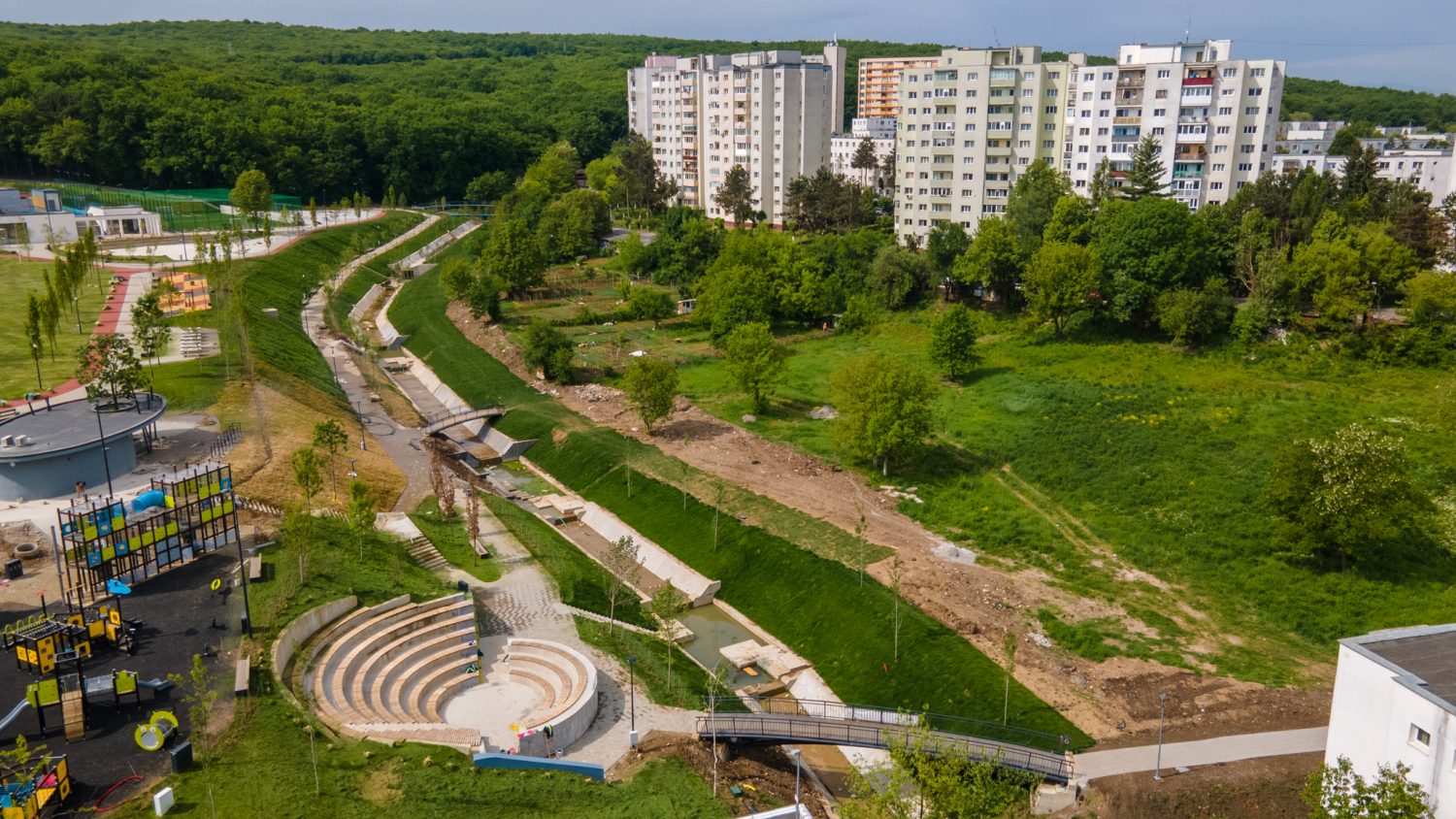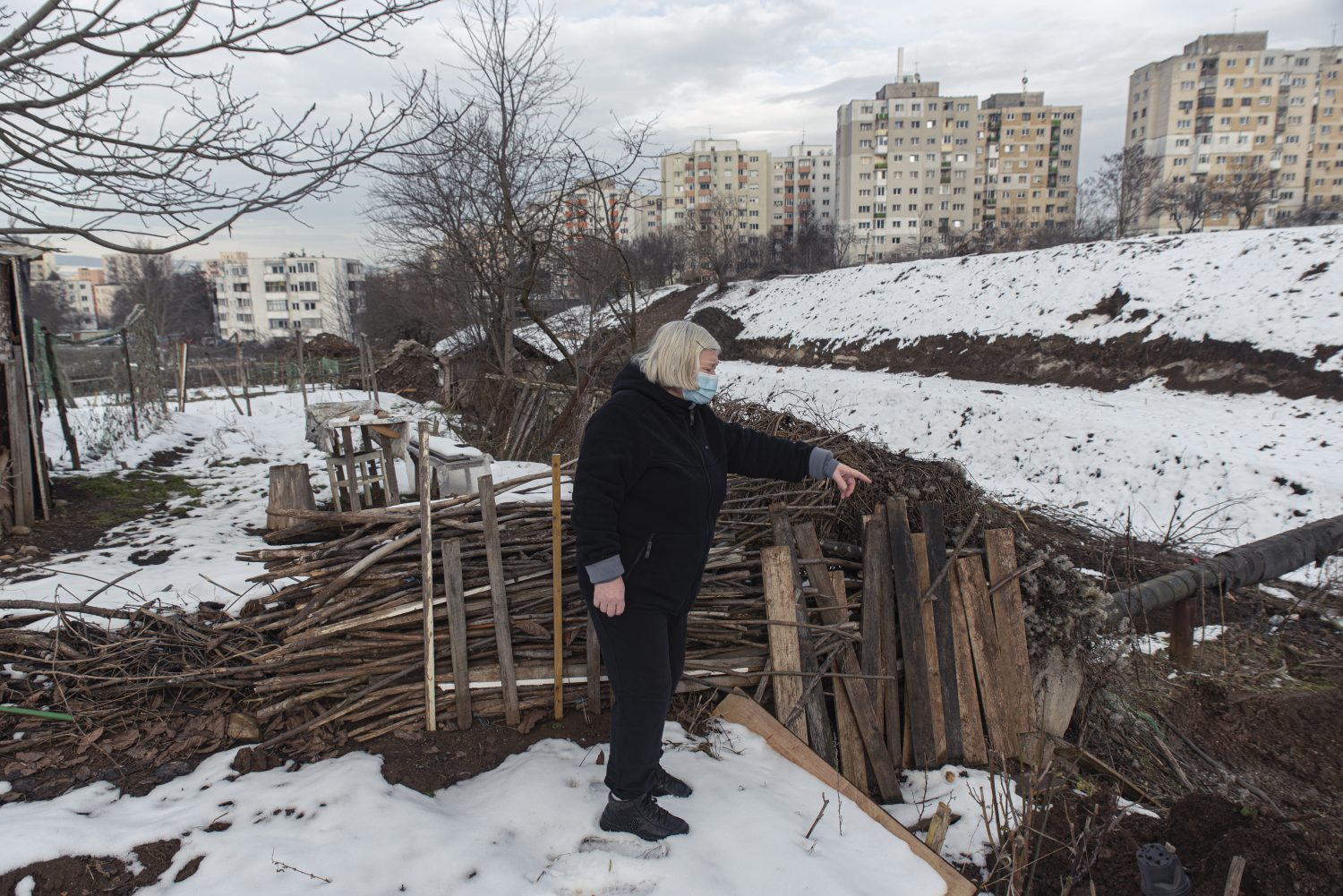A Romanian story of community work, green spaces and activism by Lala Panait and Silviu Medeșan.
“La Terenuri -Spațiu comun în Mănăștur” [At the playgrounds- Common Space in Mănăștur] is an urban intervention initiative started in 2012 in Mănăștur neighbourhood, Cluj-Napoca, Romania. The initiative lasted until 2019 with consequences and follow-ups continuing today. It started as a 2-year European cultural project: “Landscape Choreography”, with partners in Cottbus (DE) and Taranto (IT) and continued as a local project with national and municipal cultural funds. The aim of the project was to raise awareness about citizen participation in decision making in order to save a vacant lot and to create a green meeting place in the area.

Photo: Dan-Cristian Lenghel.

Photo: Radu Gaciu
To show how this area can become a local hotspot for leisure, we organized cultural and community events like the neighborhood festival “Mănăștur Days”, participative workshops with students (architecture, sociology and landscape architecture) and residents. We promoted the area as a green democratic space through activist means: petitions, performances, protests. Using resident’s participation, we imagined different scenarios on how the area should look like in the future. This endeavor was a first step to promote existing and future commoning practices in a mass-housing neighborhood from Romania, through a very diverse range of activities.
A failed project? Participation before its time
In 2015, we were selected to be part of the Actors of Urban Change program with a project to transform through participation an old cinema from the area into a space for local community needs and cultural production. On the ground, we wanted to move some of the outdoor activities into an indoor space during winter and have a full year of mobilisation together with the local community. And yet, our project failed. Back in 2015, participation was not yet a buzzword for the local decision makers. Things changed in the meantime in Cluj, but participation in culture and urban planning is still used as a “therapy” or “to inform” citizens, rather than to delegate citizens control over the process of building our cities, taking Sherry Arnstein’s terms from the ladder of participation.
Following this moment, when we realised that somehow we are on our own — that the City authorities don’t really (want) to take the ‘real participation’ path — we did our best to
work on empowering local groups of residents. After 2-3 years of working in the neighbourhood, we made connections with local journalists, NGOs and very active citizens who wanted change in their neighborhood. The yearly neighbourhood festival began to be co-organised with local residents, and we succeeded all together in printing a local newspaper. In our meetings we formed a very diverse ‘initiative group of concerned citizens’ meeting up in local bars and pizzerias, because the authorities didn’t facilitate our presence in the old cinema. Maybe our mistake was not understanding that a diplomatic relation with the authorities within legal terms must be kept, rather than an activist way of interacting. But we followed our agenda in the neighbourhood to create free spaces for meetings and real community centers for our activities, and we challenged the authorities when they worked against the local community.
The peak of the collaboration between us (the urban activists) and the local community happened in 2018 when we co-organised an event along a stream that linked the “La Terenuri” area and Cinema Dacia. Street artists worked hand in hand with local teenagers to co-produce street art; architecture and landscape architecture students worked with residents to make the stream banks more accessible by designing and building a bridge; and the local NGOs organised recycling workshops with locals. These synergies convinced the municipality to announce a project to transform the “La Terenuri” area into a public park and to build a sports facility.
In 2019, we realized that this group of citizens were ready to organize their own festival, without any intervention. Even though the loss of control and responsibility towards all our work was emotionally difficult for us, the initiators, in the end we participated at the 7th edition of the “Mănăștur Days” fully organized by the residents. Odd feeling, but this was the greatest achievement that we never imagined could happen in the first years of the intervention.
In parallel with the plans for redeveloping the urban space of “La Terenuri” and very close to our green area, a new private real estate development was proposed on top of a dozen community gardens. These gardens have been here since the 70s, when the first inhabitants moved into the new block of flats, and they were encouraged by the communist authorities to ‘take care and to arrange’ their block’s green spaces. The development of the new 13-story collective housing was accompanied by a demolition of some of the gardens (in April 2020 – in full lockdown!). This was the moment when we understood that the city is actually produced by a sum of interests that are not always equal, and that the civic actors and the local community are the most vulnerable and less powerful. The future of the city is most of the time ‘forged’ in the opaque rooms where the policy makers meet the ‘investors’.
In 2021, Lala accepted the challenge to work in the Brașov City Hall – a Transylvanian city with more than 270,000 inhabitants, where she relocated. Inside the Community Innovation department she was coordinating strategies for developing new ways of working within the city and inside the city hall: bridging sustainable relations between civil society, local communities, active citizens and the municipality, but also inside the city hall between different offices. A sort of an ‘activist trojan horse’ endeavor inside an institution with new political directions. This was the second best lesson in her professional life so far, after the “La Terenuri ” engagement. She learnt how the system looks on the inside and how all that she dreamt in terms of public space, freedom, active citizenship is seen from ‘the other side’. She resisted for only 6 months in a very difficult work environment, but it felt like 6 years of struggles, contradictions, hope, strategies, tactics, ego, politics, and hope again. It was no place for idealists or dreamers. She realized that she could do better being on the community’s side. A place outside the public sector where you still can have freedom, where you can act together with your peers without formal reports or hierarchization. After all, we imagined and created all the activist practices, stories and true meeting spaces by thinking freely.
Common (sense) conclusions
Throughout this journey we realized that our hopes and dreams for the cities do not always coincide with the ones of the authorities and, sometimes, even of citizens. In the urban realm there are always contradictions between politics, strategies, ecology, local and private interests. As urban pioneers, many times we felt left aside, even though we were talking about directions that later were published in official studies and European projects. There is an acute need for co-producing these documents, we all need to find our voice in the strategies that the city is proposing to their citizens. But, unfortunately there is a real fear of participation in the neoliberal governments that rule the Romanian cities. Our leftist agenda for inclusion and opening up the process of city-making is not very popular within the public sector, and often is declarative.
Actors of Urban Change program helped us to scale up our grassroots activism to a strategic, more zoomed out action involving urban practitioners, policy makers and politicians. We also learned to choose our fights, and sometimes, to give up. In activism there is a dark side, rarely talked about: we need to take care of ourselves, we are vulnerable human beings who intervene bodily in changing our worlds, and sometimes this can be a Sisiphean task. We have to prevent our burnouts. At the same time, we need more introspection: ‘Why do I do this? For whom?’, ‘Am I following the dogmas I am preaching, or I am just projecting them on others?’. We need to be an example while working in the communities close to us, we need to be empathic and learn to see with the other, to be ethical in our activism, to give credit and space, to collaborate with our peers, to learn from each other, to construct rather than just deconstruct, to have a hobby, to just take a break from time to time!

Photo: Grig Vulpe
Lala Panait is an anthropologist and urban activist born in Cluj, now in Brașov. She is a member of Colectiv A association, coordinator of the initiative presented above. She holds a PhD in anthropology on cultural interventions in public spaces. In the last few years, she worked as a community facilitator and project evaluator, helping young initiatives to thrive in a difficult economic context.
Silviu Medeșan is an architect, researcher and urban activist based in Cluj and working as a lecturer in architecture in Oradea. He is interested in the role of design and designers in civic participation and sustainability transitions. Together with Lala he co-edited cARTier. Peripheral interventions and he published Form follows situation, based on his PhD thesis. Currently, he is teaching at the University of Oradea and he works as an architect at his own practice. He is planning to move to a village in between Cluj and Oradea where he bought a house with friends to work on its rehabilitation.